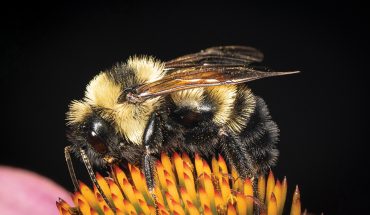by Tony Avent
illustration by Ippy Patterson
Pulmonarias, or lungworts as they are commonly called, are bold-textured, clumping woodland perennials, prized for their unique silver-spotted, deer-resistant foliage. Long a favorite of shade gardeners in temperate climates, Pulmonarias flower in late winter to very early spring, usually beginning around the end of February.
Lungwort flowers, most of which emerge usually either pink or violet, typically change to cobalt blue as they age. The flowers are borne in flat-topped flower clusters called corymbs on short stalks that top out just above the foliage.
Pulmonarias generally retain their foliage until late winter, becoming mostly deciduous just before the new season’s flowering and regrowth begin.
As is the case with many plants that have been cultivated over a long time, Pulmonaria’s name is derived from its medicinal uses. The plant has been used to treat chest ailments since the early 1500s, and pulmonary, of course, refers to lungs, as does the plant’s common name, lungwort.
The genus Pulmonaria is comprised of 16 species that can be found from cold alpine forests to warm climates from Europe and into central Asia. Since much of the early breeding and selection was done in central Europe, little attention was paid to selections for hot, humid climates. As a result, many of the early Pulmonarias introduced to our region failed to thrive in the heat and humidity of the southeast.
In the 1970s, though, breeders began using the southern European native Pulmonaria longifolia, which imparted heat adaptability to the lungworts. Soon, the plant’s popularity in warmer climates soared.
Until the early 1980s, all commercially available lungworts had green leaves with random silver spots. It was around then that plant breeders began to wonder how many spots they could coax out of a leaf, and if an all-silver leaf was possible.
The spots are the result of foliar air pockets, used for cooling the lower surface of the leaves. These air pockets mask the appearance of chlorophyll in the leaves, creating the silver patterns that we enjoy as gardeners. The logical conclusion was that cultivars with more silver in the leaves should be able to tolerate more heat, and possibly more sun.
A parade of European-bred silver-leaf lungworts soon followed, starting with Pulmonaria saccharata ‘Argentea’ – followed by Pulmonaria ‘British Sterling’. Then, in 1998, a breakthrough plant emerged with the introduction of Pulmonaria ‘Majeste’ from Didier Willery of La Ferme Fleurie Nursery in France.This splendid plant would later give rise to another of my favorites, the narrow, all silver-leaf Pulmonaria ‘Samourai’. Today, the list of silver-leaf lungworts is topped by Pulmonaria ‘Silver Bouquet’, bred by Oregon’s Terra Nova Nurseries.
In our trials, Pulmonaria ‘Silver Bouquet’ makes a scrumptious clump of 1-foot-long, shiny silver foliage, lovely enough to grow even without flowers. In late winter, its re-emerging silver leaves are topped with clusters of bubblegum-like flowers of blue and pink that hover just above the foliage.
Pulmonarias are short-lived plants by nature, and the only way to maintain them on a long-term basis is to divide the clumps every 3 to 5 years. I like to do this in fall and winter, when the entire clump can be lifted, teased apart, and replanted. Actually, any season you have time to divide the plant will work. In the garden, Pulmonarias prefer moist, well-drained soil that is rich in organic matter. While lungworts are quite drought tolerant, a consistently dry soil doesn’t give the best long-term results.
I have also found that light shade with a few hours of morning sun is preferable. While lungworts will grow for a short time in very dark settings, this is not the ideal condition for best performance. I hope you’ll give a breath of silver freshness to your woodland with the addition of some beautiful lungworts.




